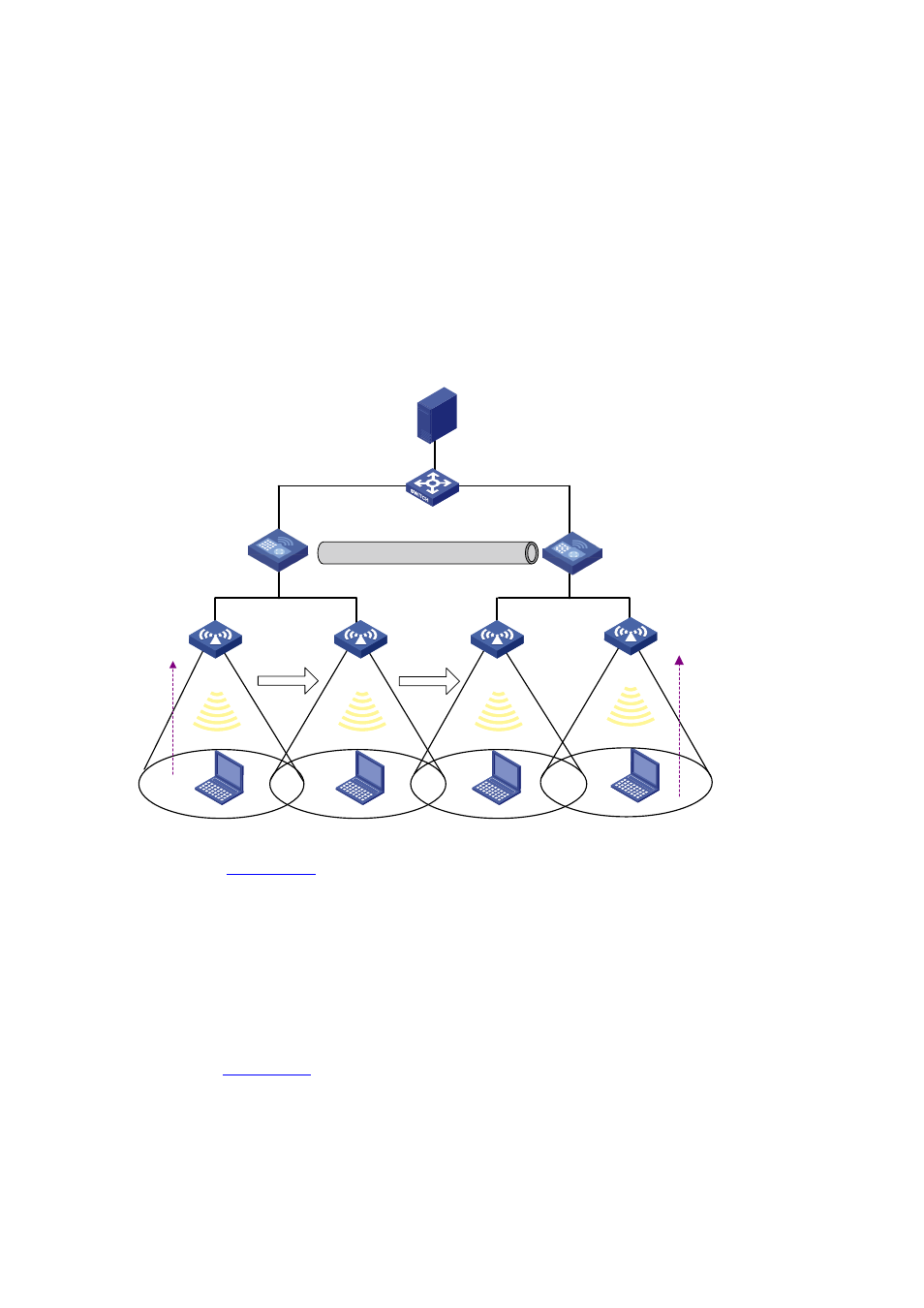Binding an ap radio to a vlan – H3C Technologies H3C WX6000 Series Access Controllers User Manual
Page 278

31-24
Binding an AP radio to a VLAN
Traffic of different services is identified by SSIDs. Locations are identified by APs. Users at different
locations access different services. For a user roaming between different APs, you can provide services
for the user based on its access AP. The detailed requirements are as follows:
Users with the same SSID but accessing through different APs can be assigned to different VLANs
based on their configurations.
A roaming user always belongs to the same VLAN.
For a user roaming between ACs, if the local AC does not have a VLAN-interface, the user needs
to use an HA in the roaming group for forwarding packets to avoid packet loss.
Figure 31-23 Schematic diagram for WLAN support for AP-based access VLAN recognition
RADIUS server
AC 1
AC 2
IACTP tunnel
AP 1
VLAN 2
VLAN 3
Client 1
AP 2
Client 1
AP 3
Client 1
AP 4
Client 2
Intra AC roaming
Inter AC roaming
HA
FA
VLAN 3
VLAN 3
O
n
line
O
n
line
As shown in
, Client 1 goes online through AP 1 and belongs to VLAN 3. When Client 1
roams within an AC or between ACs, Client 1 always belongs to VLAN 3. When Client 1 roams between
ACs, if FA, that is, AC 2, has VLAN-interface 3, AC 2 forwards packets from Client 1. Otherwise, packets
from Client 1 are sent to HA (AC 1) through the data tunnel and then HA forwards these packets.
Client 2 goes online through AP 4 and belongs to VLAN 2. That is, a client going online through a
different AP is assigned to a different VLAN.
Select Wireless Service > Access Service from the navigation tree, find the wireless service to be
bound in the list, and click the corresponding binding icon on the right to enter the AP radio setup page,
as shown in
.
Select the check box corresponding to the AP radio mode to be bound, input the VLAN to be bound in
the Binding VLAN input box, and then click Bind to finish the binding VLAN operation.
